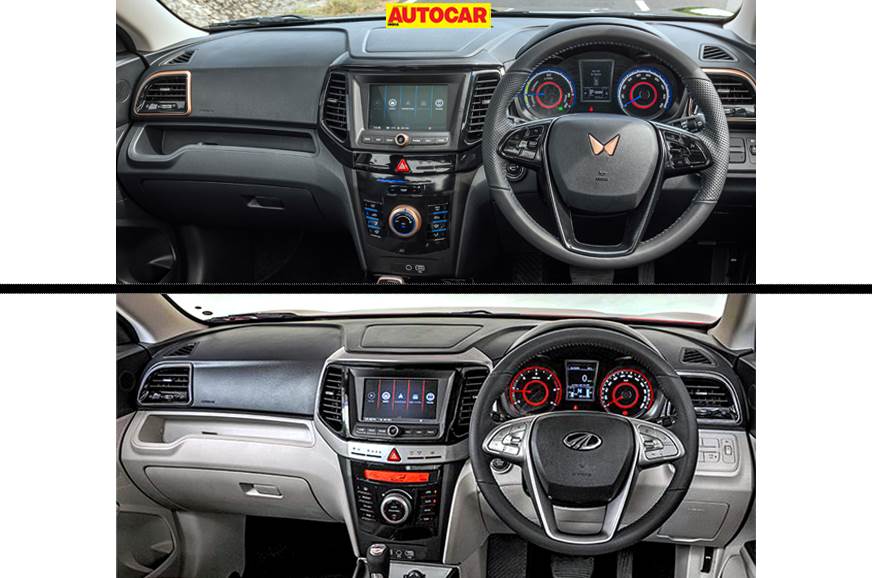
Mahindra recently revealed its first EV SUV – the XUV400 – and it is set to go on sale in January 2023. The XUV400 is based on the ICE-powered XUV300 compact SUV. Aside from the obvious difference of electric and ICE power, the XUV400 distinguishes itself in areas like length, exterior styling, interiors and equipment.
We delve deeper into the details of both the SUVs and try to understand how the XUV400 stands apart from its ICE counterpart.
Mahindra XUV400 and XUV300: dimensions
Unlike the XUV300, which is a sub-4m SUV, the XUV400 is longer, measuring 4.2m. The XUV300 is derived from the Ssangyong Tivoli but was downsized to keep it under 4m in length to avail tax benefits. However, there are no special benefits for sub-4m EVs and so Mahindra reverted to the 4.2m length of the Tivoli for the XUV400. The 205mm longer length gives the XUV400 a larger boot measuring 378 litres – a full 121 litres bigger than the XUV300.
Mahindra XUV400 and XUV300: exterior differences
The added length gives the XUV400 better proportions and it looks more balanced. The EV also gets a reprofiled rear tailgate, but the tail-light cluster is similar to the XUV300. Additionally, at the front, the XUV400 gets a different bumper design, a blanked-out X-patterned grille and generous copper accents, including the copper-coloured ‘Twin Peaks’ Mahindra logo. Mahindra says, going forward, copper will be the signature colour for their EVs. Also, while its headlamp unit is similar to the XUV300, the XUV400's LED Daytime Running Lamps (DRLs) are only confined to the main cluster and do not extend into the bumper below.
Mahindra XUV400 and XUV300: interior differences
While the basic interior layout remains the same, the XUV400 has an all-black interior theme compared to the beige and black of the XUV300. The copper accents continue on the inside with bits like the rotary knobs for the volume and aircon controls, the air vents and gear lever surrounds, and the Twin Peaks logo all finished in copper.

The interior of the XUV400 also adds subtle blue accents on the buttons and blue stitching on the seats – both not present on the XUV300. The instrument cluster is expectedly different from the XUV300 with EV-specific details, although it still remains analogue.
Mahindra XUV400 and XUV300: power and performance differences
The XUV400 is powered by a front-axle-mounted electric motor producing 150hp and 310Nm of torque and all that power comes from a 39.2kWh battery pack. This makes the XUV400 33hp more powerful than the 117hp XUV300 diesel, and 40hp more potent than the 110hp, 1.2-litre than the XUV300 petrol.
Also see:
2022 Mahindra XUV400 EV review – A competitive electric SUV
Mahindra XUV400 vs rivals: specifications compared
from Autocar Indiahttps://cdni.autocarindia.com/ExtraImages/20220916023211_XUV300_XUV400_front_Quarter.jpg



